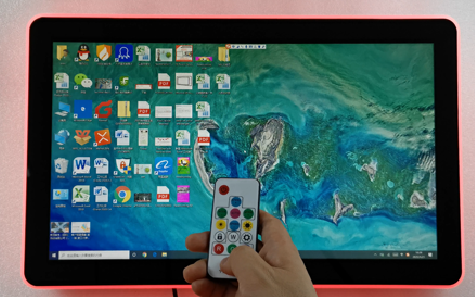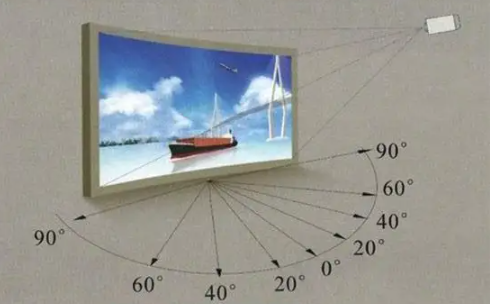In daily life, touch monitor screens are ubiquitous. It is the mainstream of today's display industry and has a wide range of applications. Many terminal products use touch monitor screens as output devices. Since the touch monitor is so important, how much do you know about it? Today Top One Tech continues to introduce the performance parameters of LCD display to you.
1. Size
The size of the touch monitor is actually the diagonal distance. It is different from CRT monitors in terms of size, and the nominal size of the touch monitor is the same as the actual viewing area, and the viewing area of 15" is also 15", there is no difference.

2. Color and chroma
In terms of color and chroma, the chroma level of LCD is very rich. TFT-LCD mainly has 16-bit 64K colors and 24-bit 16M colors, with high brightness, high contrast, and very bright colors. DSTN-LCD is very different from TFT-LCD. It has only 256K colors, and the brightness and contrast are also very poor. The colors are very dim, not so bright.
3. Resolution
The resolution is actually how many pixels there are in each row and column on the screen, which is represented by the matrix determinant, and each pixel can be accessed by the computer individually. The resolution of the LCD is set and specified by the manufacturer, and cannot be changed arbitrarily. The standard resolution icons are attached below:
4. Brightness
Brightness is also a key performance parameter for touch monitors. Brightness, also known as lightness, indicates how bright or dark a color is. The unit of brightness is candela/square meter (cd/m2), and brightness is the human perception of the intensity of light. Brightness determines whether the touchscreen monitor is bright or dim. The previous LCD screen was not bright enough, resulting in a very dark display. Today's LCD screen brightness has been greatly improved.
5. Contrast
Contrast refers to the measurement of different brightness levels between the brightest white and the darkest black in the light and dark areas of an image. The larger the difference range, the greater the contrast, and the smaller the difference range, the smaller the contrast. Like brightness, it can only be recognized by the naked eye. The greater the contrast of the touch monitor, the brighter and richer the colors displayed. However, the brightness and contrast are not as large as possible, and they need to be adjusted according to the actual application scene, so that the image and color can be truly restored.
6. Viewing angle
The viewing angle refers to the angle from which the user can clearly observe all the content on the screen from different directions. The viewing angle determines the user's visible range and the best viewing angle. The larger the viewing angle, the better, if it is too small, the picture the user sees will be distorted. The best visual effect can be achieved by viewing from the front.

7. Refresh frequency
The refresh frequency is also called the vertical frequency, that is, the vertical scanning frequency of the touch monitor, which refers to the number of images that the monitor can display per second, and the unit is Hertz (Hz). The higher the refresh frequency, the less flicker of the image display and the higher the picture quality.
9. Interface
The interface designed by the touch monitor includes DP, HDMI, DVI, VGA, audio input, audio output, DC, and has the function of expanding the interface. The number of interfaces can be increased or decreased according to your needs.
10. Backlight
Backlight is a form of lighting, mainly used on displays, that is illuminated from the side or behind. The combination of reflective film, plastic frame, light guide plate, light bar, diffusion film and vinyl is called backlight, also called LED backlight.
11. Bad Pixels
A dead pixel is actually a pixel on the touch monitor that continuously emits light or does not emit light. It is also a common problem on the touch monitor. The dead pixels need to be observed by the user themselves, and the dead pixels are permanent, and some of them cannot be repaired, so be sure to check them carefully when purchasing.










